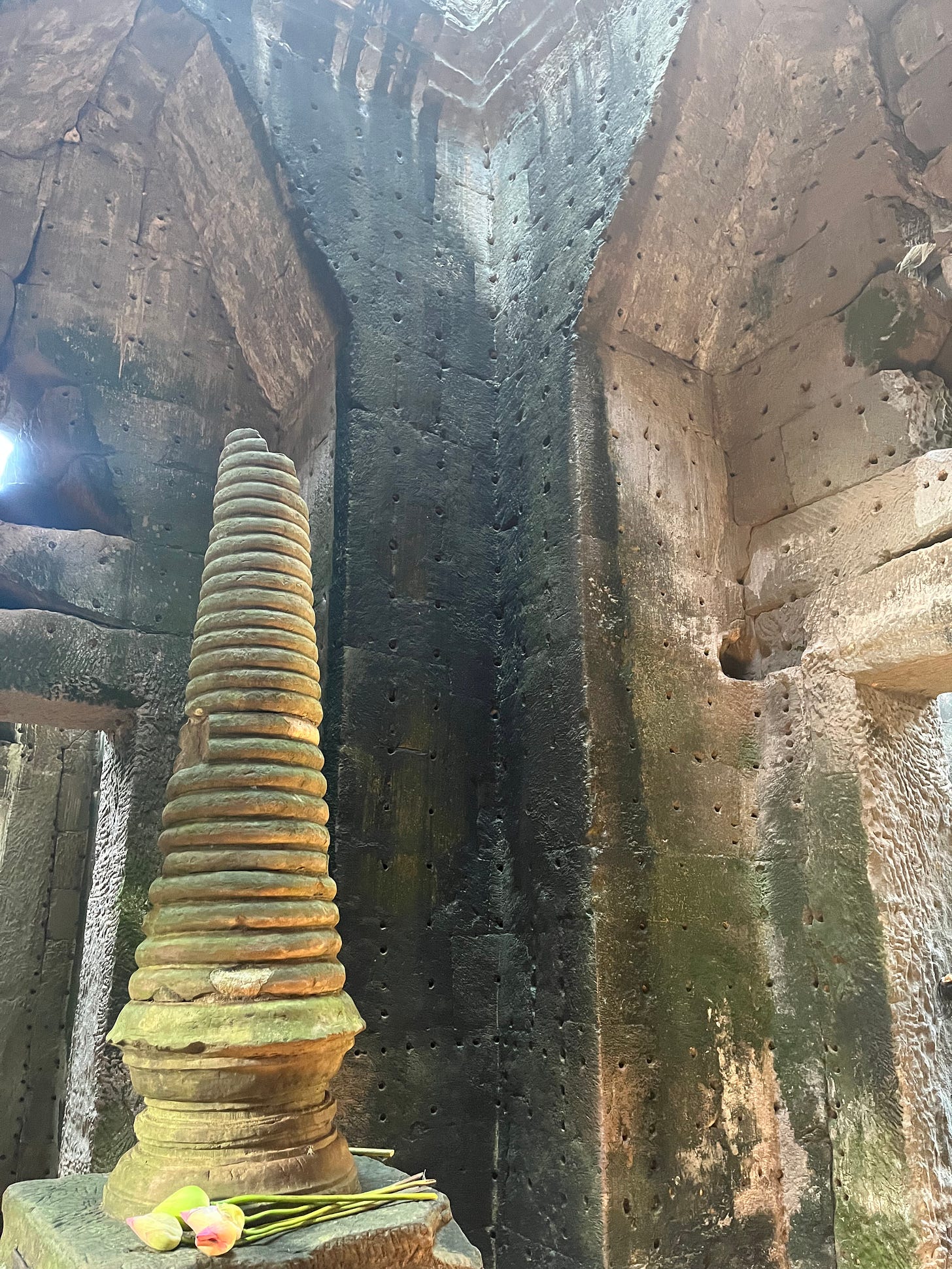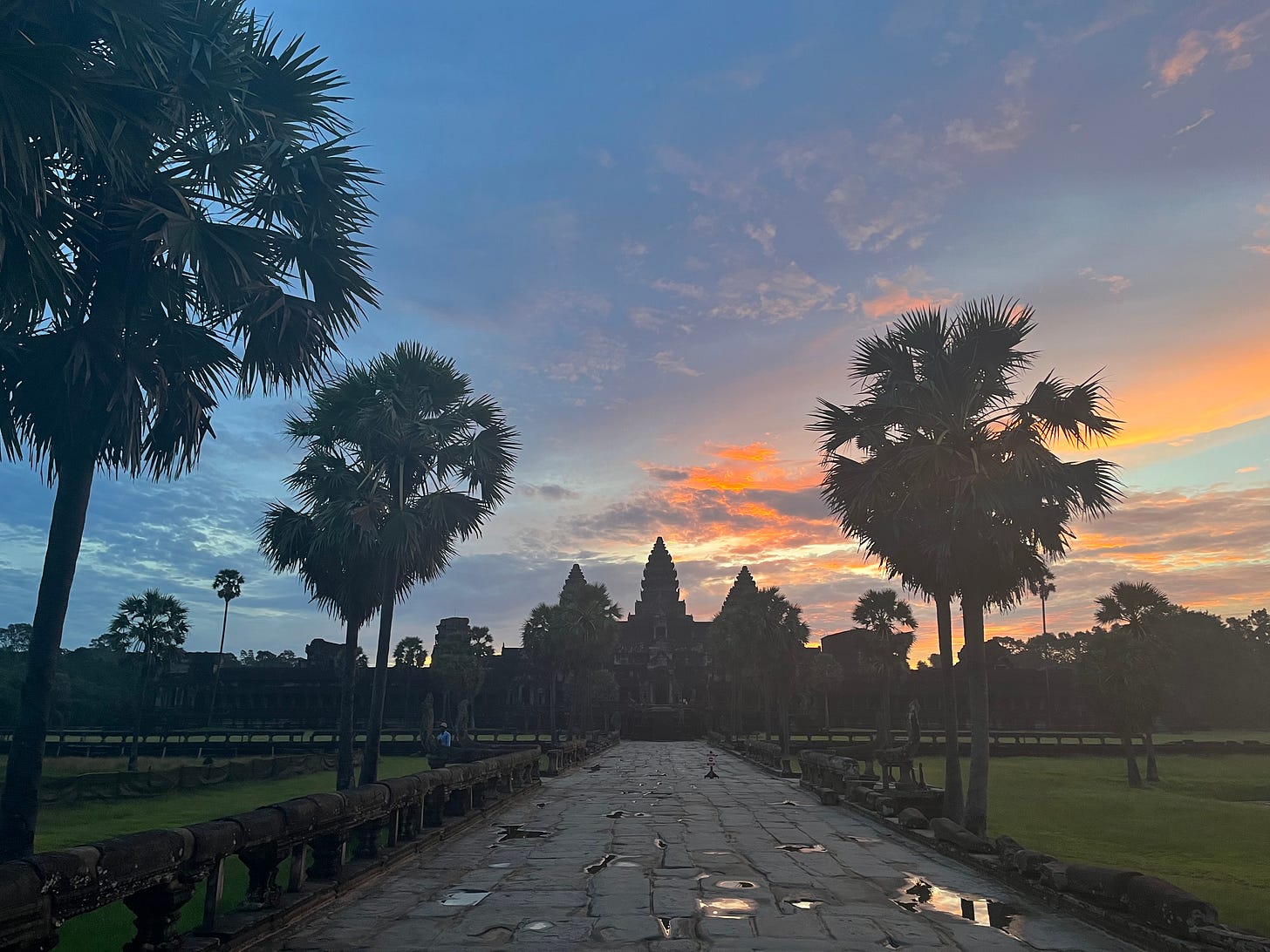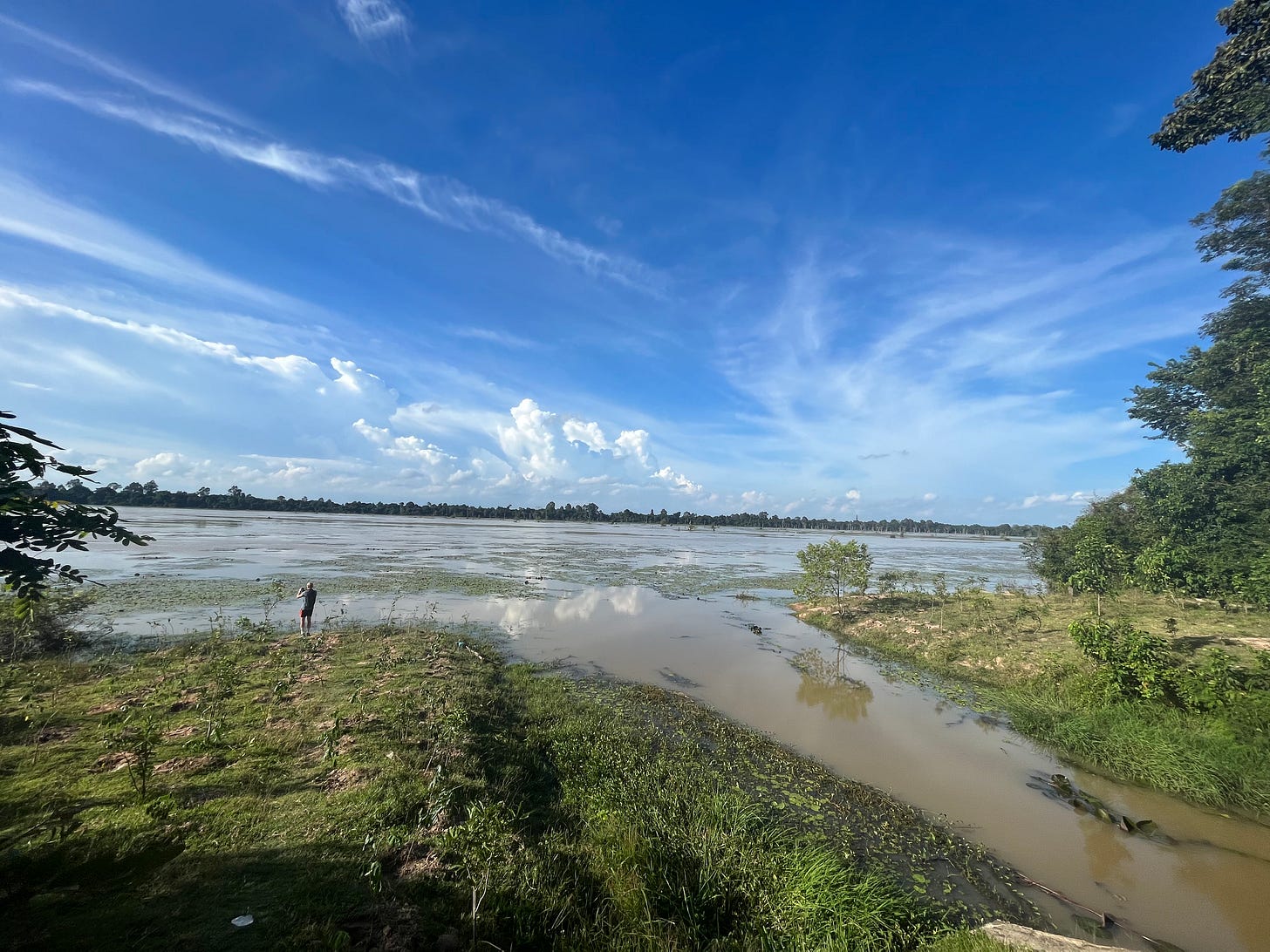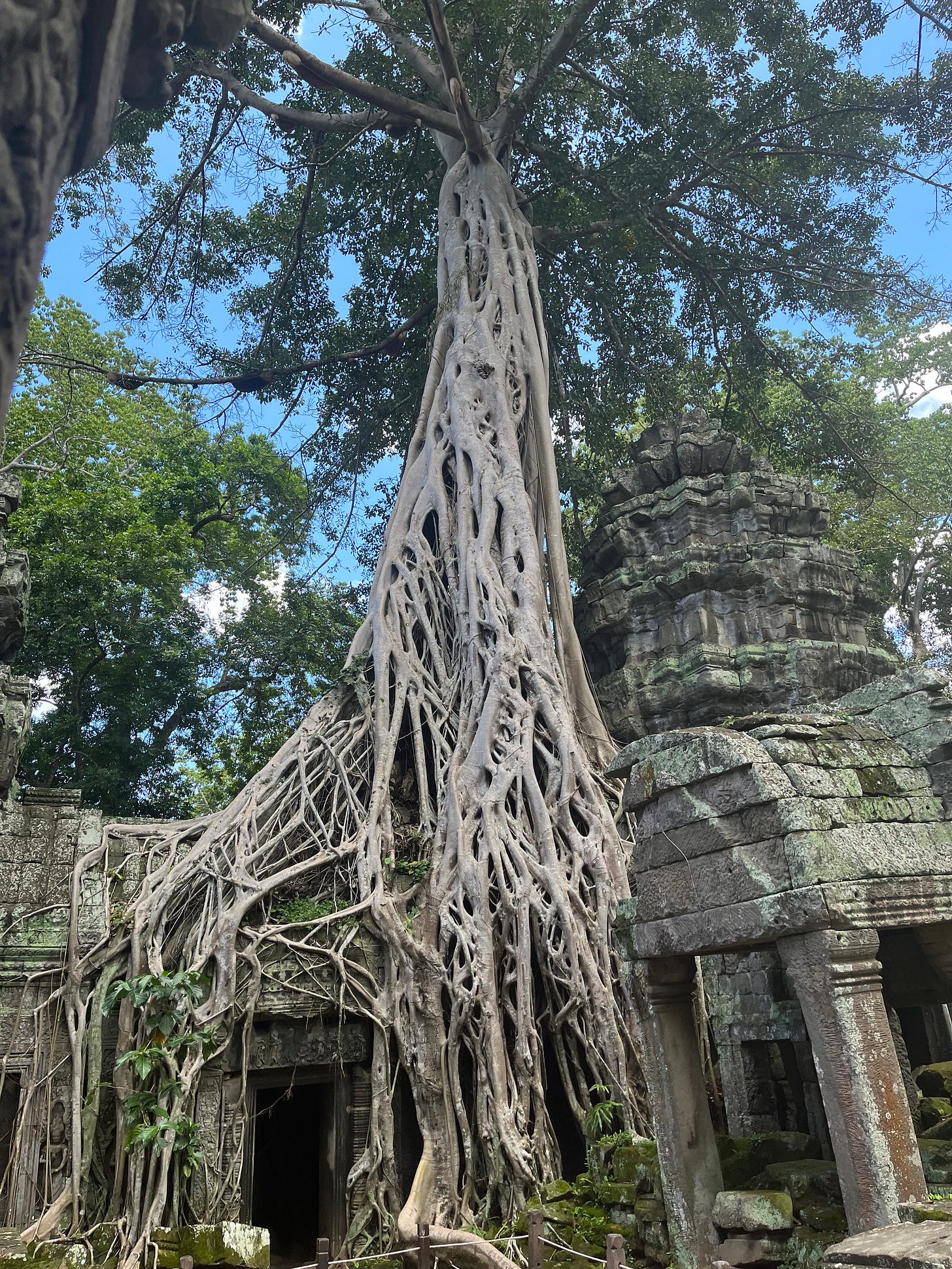Surrounded by countries like Vietnam, Indonesia, and Thailand, Cambodia is often overlooked as a destination for travelers passing through southeast Asia. If anything, they may visit Siem Reap to see Angkor Wat and then head to their next destination. This was my plan as well, but once I got here, I realized there was so much left to be discovered in this storied land.
Most people are familiar with Angkor Wat as a historical site, but few understand the history of the city of Angkor and what a prosperous empire it was a part of. Angkor, which existed from around the 9th to the 15th centuries, was situated just north of present day Siem Reap. It was a massive city that, at its peak, was home to nearly a million people. To put that into perspective, London at this time had a population of around 50,000. The city infrastructure was centuries ahead of its time, featuring complex irrigation systems to supply water to their growing population, amongst other technological feats (any Ancient Aliens fans out there? No? Just me?).
As the capital of the Khmer Empire, Angkor was home to some of the strongest kings in the world at the time. Most notably was King Jayavarman VII, who was responsible for some of the greatest developments in the history of the Khmer Empire.

Constructing dozens of hospitals, universities, and temples, his reign arguably marked the height of the empire, as he worked to ensure the physical, spiritual, and mental needs of his people were met. During his reign, the people lived in peace amongst themselves, and were also victorious against the mighty Cham Kingdom who invaded in the late 12th century.
So how did such a prosperous empire come crashing down to its current state of neglect?
The answer is not so simple. The kings who followed King Jayavarman VII were not as focused on supporting their people’s needs. If you visit Preah Khan, this is especially evident, as none of the Buddhist deities or shrines remain. They were removed because Hinduism was viewed by the succeeding rulers as the only way forward for Khmer (Buddhism was eventually reintroduced in Cambodia during the 16th century). The empire slowly declined until Thai Kingdoms to the West dealt the final blow and captured Angkor in the late 14th century 1. After the fall of Angkor, the Khmer people entered a long period of weak leadership and constant influence from foreign governments.
Eventually, the Kingdom of Cambodia was established in the 1950s, during its occupation by Japan 2. During the first 20 years of its existence, the independent nation held neutral policies toward surrounding conflicts. The North Vietnamese Army took advantage of Cambodia’s neutrality and began to use their eastern provinces as military bases. At the same time, civil dispute and political polarization were occurring within Cambodia, spreading the ruling government thin.
This, in part, led to the creation of the Khmer Rouge, an insurgent militia that would help to overthrow the ruling government. The new government quickly aligned themselves with the US, angering the Northern Vietnamese. In response, the Northern Vietnamese Army began to attack Cambodia’s eastern provinces, causing the US to retaliate, bombing the occupied parts of Cambodia to absolute shit. In fact, the US dropped more bombs on Cambodia during this time than they did on Vietnam during the entirety of the Vietnam War.
Many historians argue that by creating chaos among the rural population and destabilizing the economy, the US’s bombing made the rise of the Khmer Rouge possible. According to Ben Kiernan, Director of Genocide Studies Program at Yale, the Khmer Rouge “used the bombing's devastation and massacre of civilians as recruitment propaganda and as an excuse for its brutal, radical policies and its purge of moderate communists.” 3 Because of this, the Khmer Rouge, led by Pol Pot, were strong enough to operate independently and were eventually able to establish Democratic Kampuchea in 1975.
This marked the beginning of some of the darkest days that the Khmer people have ever experienced. The leaders of this new ‘Democratic’ Kampuchea sought to completely restructure Cambodian society, with their first order of business being to force evacuations out of every major town and into the countryside. Pol Pot and Co. justified their orders by explaining that if the people did not evacuate, they would be killed by US bombs. They were hoping to turn Cambodia into an agrarian society and needed more farmers to do so, hence the push to the countryside. In reality, the effects of this migration were horrendous, with families torn apart and tens of thousands starved to death.
It is clear that Pol Pot had a bit of an inferiority complex about him as well, fearing anyone who may be smarter than him. As a result of his paranoia, he had all intellectuals (doctors, teachers, engineers, people who wore glasses, people who spoke a foreign language, etc.) and their families arrested and taken to prisons throughout the country. In these prisons, the intellectuals of Cambodia were tortured day and night in an effort to force confessions of the treasonous acts they had allegedly committed. One of the most notorious prisons was S-21, a secret prison located in Phnom Penh in an old elementary school.
Visiting the current site was nothing short of a trip inside a real life twilight zone. Immediately after entering the schoolyard, you can feel an aura of indescribable pain and suffering that had occurred there not so long ago. Up until about a decade ago, there was still a stench of death that lingered in the school halls.
Depending on how high of a threat you were considered to be by the Angkar (military police - similar to the SS of Nazi Germany), you would be kept in one of two types of cells at S-21. The first consisted of rooms in which upwards of 30 inmates would be chained to the floor laying flat in a row next to each other. They were not able to roll over, make noises of any kind, or get up to relieve themselves. Keep in mind, all of this occurred inside of classrooms, which no more than 2 years prior were full of children laughing and learning.

The second type of cells were small ‘rooms’ made of brick that were about three feet wide and five feet long. Prisoners were chained to the floor and given an ammunition box for feces and a gas can for urine. According to one of only 23 survivors, if they spilled the gas can of urine, they would be forced to lick the floor until it was clean. This was just one of the numerous torture methods that were used to dehumanize the prisoners, all in an effort to force a confession for crimes they likely did not even commit.
Once the Angkar decided that a prisoner deserved to be executed, they were blindfolded, put on a train or bus, and told that they were being taken to a new home. In reality, they were being shipped off to one of the numerous killing fields — mass graves where up to 300 people were killed a day — throughout the country.
After nearly half a decade of terror caused by Pol Pot and his minions, the people of Cambodia were freed by the Vietnamese army in 1979. In total, it is estimated that over two million Cambodians were killed during his reign, making it one of the largest genocides to have occurred in recent history.
Pol Pot went on to live in the west of Cambodia for another 20 years under the protection of the Khmer Rouge before finally going under trial. He died from a heart attack before he could be sentenced.
It is clear to me that the spirit of the Khmer people is one of the strongest I’ve ever encountered. They went from being on top of the world during the time of the Khmer Empire, to a long period of being pushed around by foreign entities, to a dark and cruel betrayal by one of their own countrymen in Pol Pot. Finally, Cambodia is in a period of rebirth and on a path towards prosperity yet again.
Experiencing the sunset on top of the killing caves is a perfect metaphor for this new period of the ever evolving story of the Khmer people. As the sun sets on the darkest part of their history, the sun will rise again, shining brightly, just as it did over Angkor.
References
"Scientists dig and fly over Angkor in search of answers to golden city's fall by Miranda Leitsinger". The San Diego Union-Tribune. 13 June 2004. Archived from the original on 24 December 2013. Retrieved 19 June 2015.
Keat Gin Ooi Southeast Asia: a historical encyclopedia
Kiernan, Ben (2008). The Pol Pot Regime: Race, Power, and Genocide in Cambodia under the Khmer Rouge, 1975–1979. Yale University Press. pp. 16–19.










Absolutely loved the story. Very interesting and beautiful place. Thanks for sharing. Looking forward to your other adventure story. Love you bunches 💕